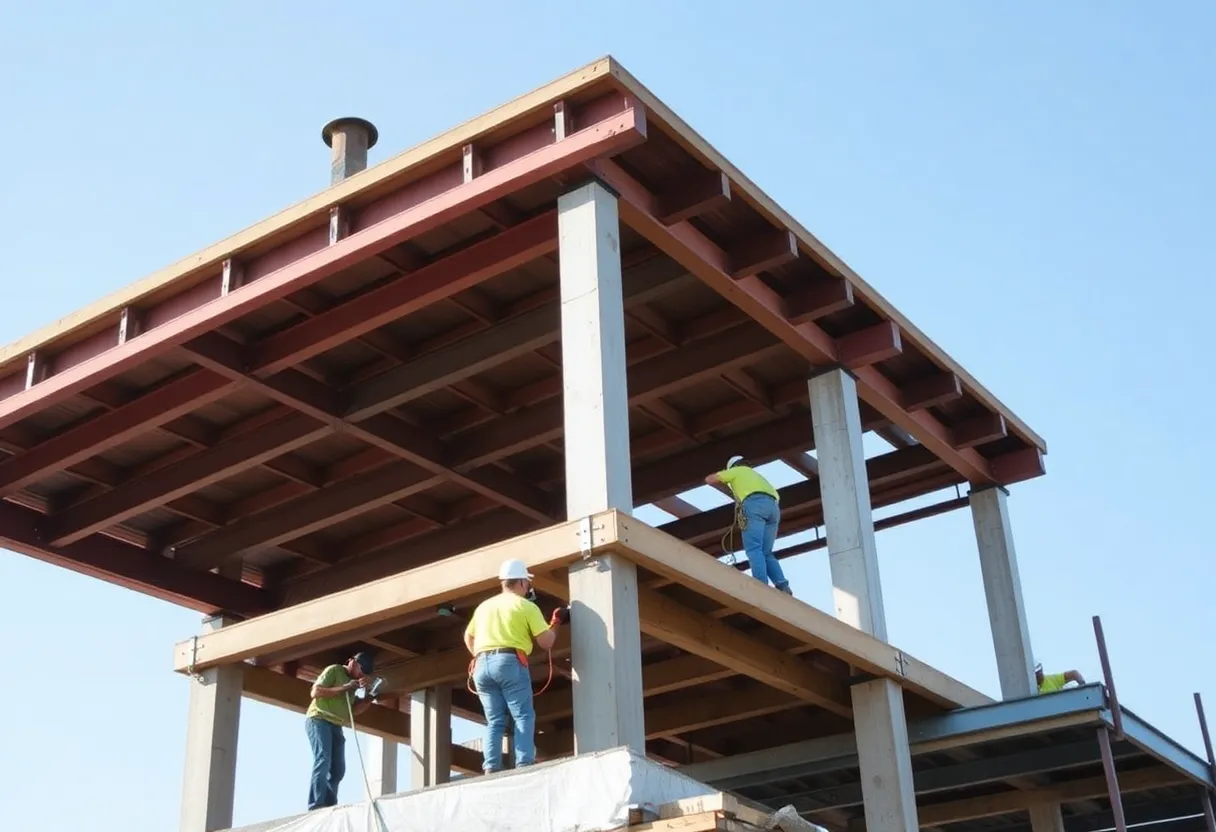News Summary
The construction industry is at a crucial juncture, responding to a $1.2 trillion infrastructure bill that presents both opportunities and challenges. While there are significant funding opportunities, firms must navigate economic uncertainties, workforce shortages, and ongoing inflationary pressures. Strategic financial planning is essential for construction companies to manage risks effectively, maintain profitability, and adapt to the rapidly evolving market landscape. The necessity for proactive risk management and collaboration among teams becomes increasingly evident as the sector faces fluctuating project demands and material costs.
Construction Firms Navigate Economic Challenges Amid $1.2 Trillion Infrastructure Bill
The construction industry finds itself at a pivotal moment as it navigates a robust $1.2 trillion infrastructure bill overflowing with opportunities but fraught with uncertainties. This unprecedented influx of funding is prompting construction firms to reassess their strategies to not only seize available opportunities but also to weather the economic challenges that lie ahead.
Opportunities and Uncertainties
At the heart of this public infrastructure bill are domestic procurement preferences and materials sourcing requirements, which are expected to stimulate growth in the construction sector. However, with this rapid scaling, firms are also reminded of the pressing need to manage risks to maintain profitability. A solid financial roadmap today is paramount for firms aiming to adapt to the evolving market conditions.
Looking towards 2025, the construction sector is set to face a mix of challenges and opportunities. Though material costs may stabilize, ongoing inflationary pressures are projected to persist, which will compel companies to reevaluate their pricing strategies effectively.
Workforce Challenges and Economic Management
The construction sector is grappling with significant workforce shortages and escalating wage demands, creating a heightened focus on project staffing. To effectively manage these economic uncertainties, companies must prioritize cash flow forecasting and implement flexible contracts. As the scope of government-funded infrastructure projects fluctuates, competition for work intensifies.
Regular updates to tax strategies are vital due to frequent shifts in tax laws that potentially impact profitability. Maintaining a clear financial structure not only mitigates risks but also aids in effective cash flow management. A robust financial roadmap assists businesses in adapting to rising costs, fluctuating project demands, and unpredictable market trends.
Strategic Financial Planning
To ensure consistent cash flow, milestone-based billing is becoming increasingly recommended over reliance on percent-completion billing. The importance of strategic financial planning cannot be overstated, particularly when addressing major expenditures such as equipment purchases and workforce expansion. Assessing clients’ economic conditions is crucial to avoid venturing into high-risk projects.
Metrics like cash flow, billing, utilization, and profit should be closely monitored to maintain ongoing financial performance and to preemptively identify risks. Construction firms face the challenge of actively managing costs on a project-by-project basis to ensure lasting profitability.
Cost Management and Monitoring
Regular updates of pricing models, coupled with the utilization of technology for real-time financial monitoring, can aid in avoiding budget overruns. Establishing clear payment terms paired with diligent follow-up on outstanding invoices is essential to preventing funding gaps. Additionally, thoughtful tax planning is pivotal in safeguarding profits and maximizing earnings for construction companies.
Employing equipment depreciation strategies can significantly reduce tax burdens. Proactive consultation with tax professionals throughout the year helps protect earnings against unexpected costs, while project-based accounting allows for better management of unique costs associated with each construction project.
Profit Margin Monitoring and Collaboration
Monitoring profit margins on a job-by-job basis enables firms to swiftly identify and rectify issues, fostering financial discipline. Effective collaboration between finance and operations teams is essential for executing sustainable projects. As construction firms expand to meet evolving demands, the significance of financial oversight only intensifies.
Trends Influencing the Construction Industry
Current trends affecting the construction industry include ongoing challenges stemming from tariffs and rising inflation, particularly concerning builder’s risk insurance. Negotiations surrounding price escalation clauses are increasingly common as companies adapt to economic fluctuations and contract agreements evolve.
With insurers adjusting how they price and underwrite builder’s risk insurance in response to cost volatility, early planning—including environmental risk assessments—is becoming standard practice for securing project insurance. Companies are also embracing new strategies such as securing supply bonds to mitigate risks related to fluctuating material costs.
Proactive Risk Management
The rising trend of proactive risk management in construction planning is gaining traction as firms seek to effectively address rising costs. Establishing a robust negotiating position with insurance providers is becoming imperative to navigate the challenging economic climate.
The construction sector stands at the crossroads of opportunity and uncertainty; only those firms who strategically plan and manage financial risks will thrive in this evolving landscape.
Deeper Dive: News & Info About This Topic
Additional Resources
- For Construction Pros: Financial Roadmap for Construction Firms
- Insurance Business: Tariffs and Inflation Impacting Builders Risk Insurance
- Deloitte: Commercial Real Estate Outlook
- CBS News: Trump Election Impact on Economy
- Time: Donald Trump’s Economy Plan for 2024
- Wikipedia: Construction Industry
- Google Search: Construction Industry Economic Challenges
- Google Scholar: Construction Economic Management
- Encyclopedia Britannica: Construction
- Google News: Construction Industry News
Author: Construction FL News
The FLORIDA STAFF WRITER represents the experienced team at constructionflnews.com, your go-to source for actionable local news and information in Florida and beyond. Specializing in "news you can use," we cover essential topics like product reviews for personal and business needs, local business directories, politics, real estate trends, neighborhood insights, and state news affecting the area—with deep expertise drawn from years of dedicated reporting and strong community input, including local press releases and business updates. We deliver top reporting on high-value events such as the Florida Build Expo, major infrastructure projects, and advancements in construction technology showcases. Our coverage extends to key organizations like the Associated Builders and Contractors of Florida and the Florida Home Builders Association, plus leading businesses in construction and legal services that power the local economy such as CMiC Global and Shutts & Bowen LLP. As part of the broader network, including constructioncanews.com, constructionnynews.com, and constructiontxnews.com, we provide comprehensive, credible insights into the dynamic construction landscape across multiple states.





